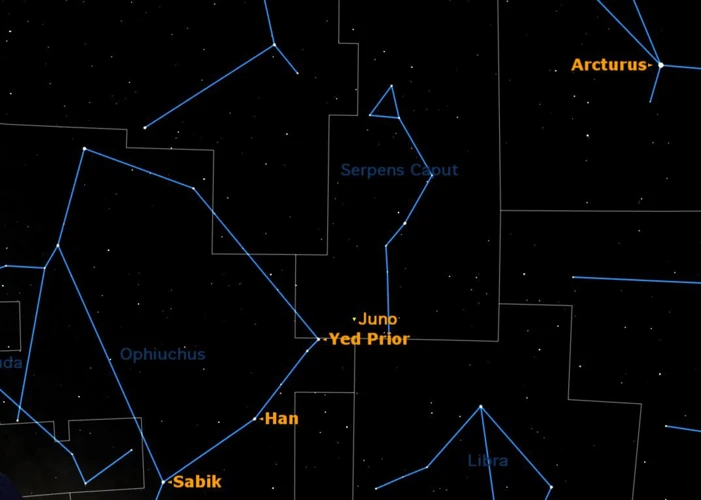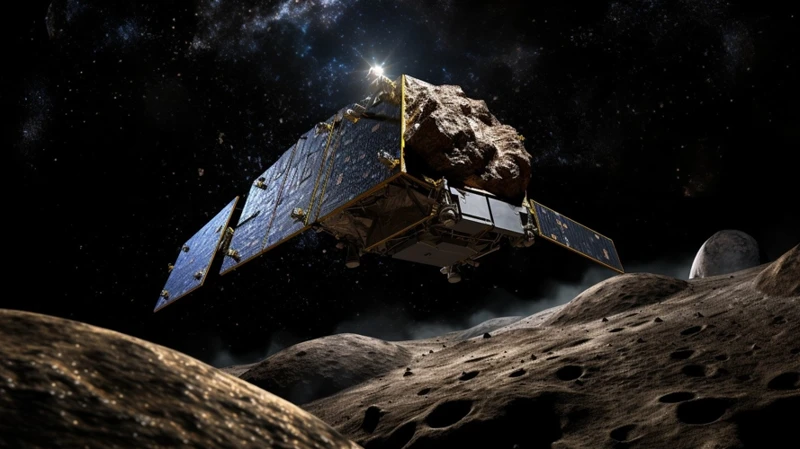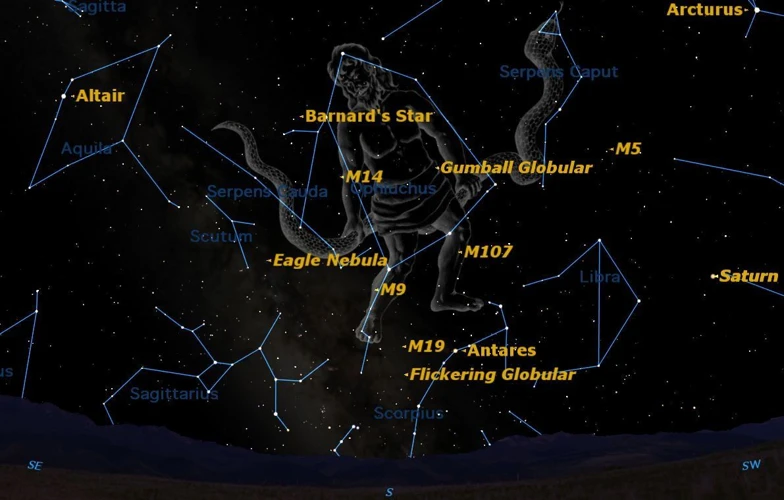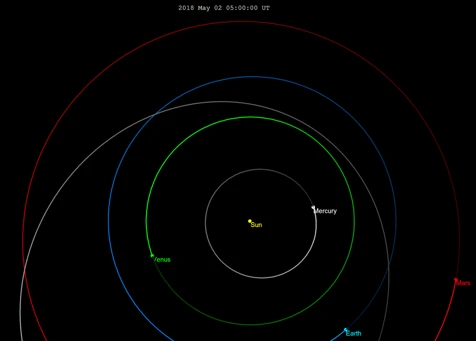Imagine looking up at the night sky and finding a multitude of shining stars twinkling back at you. Amidst this celestial wonder, there are also tiny rocky bodies called asteroids, silently orbiting the Sun. Wondering what exactly are these asteroids, how scientists track and study them, and why it is so important? In this article, we will embark on an exciting journey to explore the world of asteroids and delve into the methods used by astronomers to track and study them, unearthing fascinating insights about our solar system and the potential threats it may face.
Contents
- What are Asteroids?
- Importance of Tracking and Studying Asteroids
- Methods of Tracking Asteroids
- Studying Asteroids
- Future Directions and Challenges
- Conclusion
-
Frequently Asked Questions
- 1. What is the difference between asteroids and meteoroids?
- 2. Can asteroids pose a threat to Earth?
- 3. How do astronomers track the movement of asteroids?
- 4. What can the study of asteroids tell us about the origin of the solar system?
- 5. Are all asteroids made of rock and metal?
- 6. How do astronomers determine the composition of asteroids?
- 7. Are there any missions planned to study asteroids up close?
- 8. How do citizen science initiatives contribute to asteroid research?
- 9. Can asteroids be used as potential resources in space exploration?
- 10. What are the biggest challenges in tracking and studying asteroids?
- References
-
Frequently Asked Questions
- 1. Can asteroids pose a threat to Earth?
- 2. How do astronomers track asteroids?
- 3. Why is it important to study asteroids?
- 4. What technologies are used to detect asteroids?
- 5. How does spectroscopy help in studying asteroids?
- 6. Are there any citizen science initiatives involving asteroid tracking?
- 7. Are there any planned missions to collect samples from asteroids?
- 8. Can studying asteroids help us understand the evolution of our solar system?
- 9. How do ground-based observatories contribute to asteroid tracking?
- 10. Are there any future challenges in asteroid tracking and studying?
- References
- Read More
What are Asteroids?

Asteroids are small rocky objects that orbit the Sun, primarily found in the asteroid belt, a region located between the orbits of Mars and Jupiter. These celestial bodies vary in size, ranging from mere boulders to colossal masses several hundred kilometers across. Their composition consists mainly of rock and metal, resembling miniature planets without an atmosphere. In fact, the largest asteroid, Ceres, was once considered the ninth planet in our solar system before being reclassified as a dwarf planet. Asteroids are remnants from the early formation of the solar system, providing valuable insights into the processes that shaped our cosmic neighborhood. They often originate from collisions between larger bodies, such as planets or moons, and their study contributes to our understanding of the origin and evolution of celestial objects. Asteroids have captured the imagination of humans for centuries, inspiring ancient myths and even influencing cultural beliefs, as seen in the intricate Mayan calendar system or the origins and mythologies of ancient constellations. Exploring the nine realms of Norse mythology also reveals the significance of asteroids in ancient stories and beliefs. Understanding the nature and characteristics of asteroids is crucial for unraveling the mysteries of our universe and safeguarding our planet from potential dangers.
Importance of Tracking and Studying Asteroids
![]()
The tracking and study of asteroids play a crucial role in expanding our knowledge of the solar system and protecting Earth from potential impacts. One of the primary reasons for tracking asteroids is to understand the potential threats they pose to our planet. By monitoring and predicting the trajectories of Near-Earth Objects (NEOs), scientists can assess the risk of a collision and devise strategies for planetary defense. This is particularly important because some asteroids possess the potential to cause significant damage if they were to collide with Earth. The study of asteroids also provides valuable insights into the origin and evolution of the solar system. These celestial bodies are remnants from the early stages of our cosmic neighborhood, preserving the building blocks that led to the formation of planets and other celestial objects. Scientists analyze the composition of asteroids to gain a deeper understanding of the processes that shaped our solar system. The cultural significance of asteroids cannot be overlooked. They have inspired ancient myths and influenced various belief systems, such as the intricate Mayan calendar system or the origins and mythologies of ancient constellations. Exploring the mythology and symbolism associated with asteroids allows for a multidisciplinary perspective that combines science and cultural heritage. By tracking and studying asteroids, we unlock the secrets of our past, protect our future, and gain a deeper appreciation for the wonders of the cosmos.
1. Protecting Earth from Potential Impact
Protecting Earth from potential asteroid impacts is a significant reason why tracking and studying these celestial objects is crucial. While the chances of a catastrophic asteroid collision are rare, the consequences could be devastating. By monitoring asteroids and predicting their paths, scientists can identify potential impact risks and take necessary measures to mitigate the threat. Advanced telescopes and radar systems allow astronomers to locate and track Near-Earth Asteroids (NEAs) that approach our planet’s vicinity. Organizations like NASA maintain databases of known asteroids and continuously update their trajectories using precise calculations. In the event of an imminent threat, scientists can devise strategies, such as deflecting or diverting the asteroid’s path, to prevent a catastrophic collision. Understanding the composition and characteristics of asteroids is essential for assessing the potential impact consequences, allowing scientists to better prepare for potential catastrophic events. Initiatives like the Near-Earth Object Observations (NEOO) program strive to identify, track, and characterize Near-Earth Objects (NEOs) to ensure the safety of our planet. By harnessing scientific knowledge and technological advancements, we can work towards safeguarding the Earth from the potential impacts of asteroids.
2. Understanding the Origin of the Solar System
Understanding the origin of the solar system is another key reason why tracking and studying asteroids is of great importance. Asteroids provide a window into the past, offering clues about the conditions and processes that prevailed during the early stages of our cosmic neighborhood. By analyzing the composition and physical characteristics of asteroids, scientists can gain insights into the building blocks that formed the planets and other celestial bodies in our solar system. These ancient rocks can act as time capsules, preserving valuable information about the chemical composition and distribution of materials at the time of their formation. Studying asteroids also helps scientists test and refine theories about planet formation, such as the Nebular Hypothesis, which proposes that the sun and planets formed from a rotating disk of dust and gas. Additionally, the study of asteroids has implications beyond our solar system, as the processes and dynamics observed in our local region can provide insights into the formation of other star systems throughout the universe. The intricate Mayan calendar system, ancient constellations, and the realms of Norse mythology all touch upon these ideas and reflect the curiosity of humans to understand the origins of the universe in which we exist. Through continued research and exploration, astronomers are gradually piecing together the puzzle of the solar system’s birth and evolution, with asteroids playing a crucial role in this ongoing quest for knowledge.
Methods of Tracking Asteroids
![]()
Tracking asteroids is a complex task that requires the use of various methods and technologies. These methods involve ground-based observatories, space-based telescopes, radar imaging, infrared detection, and citizen science initiatives.
1. Ground-based Observatories: Astronomers use ground-based telescopes equipped with powerful cameras and sensors to detect and track asteroids. By repeatedly imaging the night sky and comparing the positions of objects over time, they can identify the movement of asteroids against the background of stars. Sophisticated software algorithms help in analyzing the collected data and predicting the future trajectories of these objects.
2. Space-based Telescopes: Space-based telescopes, such as the Hubble Space Telescope, play a crucial role in asteroid tracking. They offer several advantages over ground-based observatories, including clearer images unaffected by Earth’s atmosphere and the ability to observe a wider range of wavelengths. These telescopes provide valuable data on the size, shape, and composition of asteroids, enabling scientists to better understand their characteristics.
3. Radar Imaging: Radar imaging involves bouncing radio waves off asteroids and measuring the time it takes for the waves to return. This method provides highly accurate measurements of an asteroid’s size, shape, rotation, and surface features. Radar imaging can even reveal the presence of small moons or satellites orbiting the asteroid, providing additional insights into its dynamics.
4. Infrared Detection: Infrared telescopes enable astronomers to detect the heat emissions from asteroids. Since asteroids absorb sunlight and re-radiate it in the form of heat, infrared detection allows for the identification and tracking of these objects even when they are not illuminated by the Sun. This method is particularly useful for detecting and studying dark or carbon-rich asteroids that are difficult to observe using visible light.
5. Citizen Science Initiatives: Citizen science initiatives have emerged as valuable resources for tracking and discovering asteroids. These projects involve volunteers who contribute to data collection, analysis, and even the detection of previously unknown asteroids. Platforms like NASA’s Asteroid Zoo and the International Astronomical Search Collaboration allow anyone with an interest in astronomy to participate in meaningful scientific research.
Using a combination of these methods, astronomers continuously monitor the skies and update asteroid catalogs, ensuring that potentially hazardous asteroids are tracked and their trajectories accurately predicted. These efforts contribute to our understanding of the distribution and characteristics of asteroids, offering insights into the formation and evolution of our solar system. Additionally, the tracking of asteroids plays a crucial role in protecting the Earth from potential impacts, which will be discussed in more detail later in the article.
1. Ground-based Observatories
Ground-based observatories play a fundamental role in tracking and studying asteroids. These observatories are equipped with powerful telescopes that enable astronomers to observe and monitor these celestial objects from Earth. Observatories are strategically located in various regions across the globe, taking advantage of different geographic locations and atmospheric conditions. The telescopes used in ground-based observatories capture visible light, allowing astronomers to gather essential data about the size, shape, and trajectory of asteroids. Additionally, these observatories use advanced techniques such as photometry and astrometry to measure the brightness and position of asteroids accurately. By observing asteroids over an extended period, astronomers can determine their orbits and predict potential close approaches or impacts with Earth. Ground-based observatories also contribute to the study of asteroid composition through spectroscopy. Spectrographs analyze the light reflected or emitted by asteroids, divulging information about their chemical composition and mineralogy. This data can provide valuable insights into the origins and evolution of asteroids, shedding light on the ancient history of our solar system. Some notable ground-based observatories include the Mauna Kea Observatory in Hawaii, which benefits from its high altitude and clear atmospheric conditions, and the European Southern Observatory (ESO) in Chile, renowned for its array of advanced telescopes. Through the study of asteroids, astronomers continue to deepen our understanding of the cosmos, revealing fascinating connections between these celestial bodies and various aspects of human culture and mythology, such as the intricate Mayan calendar system, the origins and mythologies of ancient constellations, or even the exploration of the nine realms in Norse mythology.
2. Space-based Telescopes
Space-based telescopes provide astronomers with unique opportunities for tracking and studying asteroids. These telescopes are specifically designed to be positioned outside of the Earth’s atmosphere, allowing them to capture clearer and more detailed images of celestial objects. One of the most renowned space-based telescopes is the Hubble Space Telescope. Since its launch in 1990, Hubble has revolutionized our understanding of the universe, including the study of asteroids. Its high-resolution images have enabled scientists to observe asteroids in unprecedented detail, revealing their shapes, sizes, and surface features. In addition to Hubble, other space-based telescopes like the Spitzer Space Telescope, the Chandra X-ray Observatory, and the James Webb Space Telescope, among others, have contributed significantly to asteroid research. These telescopes cover a wide range of wavelengths, including infrared and X-ray, providing diverse perspectives on asteroids and aiding in the determination of their composition and characteristics. The use of space-based telescopes also minimizes the interference of Earth’s atmosphere, which can distort observations made from ground-based observatories. Through the data collected by these space-borne observatories, astronomers continue to deepen their understanding of asteroids and their role in the solar system, shedding light on their formation and evolution. Whether it’s uncovering the intricate Mayan calendar system, exploring the origins and mythologies of ancient constellations, or venturing into the nine realms of Norse mythology, asteroids captivate our imagination and expand our knowledge of the cosmos.
3. Radar Imaging
Radar imaging is a powerful technique used by astronomers to track and study asteroids. This method involves bouncing radio waves off the surface of an asteroid and analyzing the reflected signals. By measuring the time it takes for the radio waves to return, scientists can determine the distance, size, shape, and even surface features of the asteroid. Radar imaging provides detailed information about the structure and composition of asteroids, allowing scientists to create high-resolution images and 3D models. This technique is particularly useful for studying asteroids that are difficult to observe with traditional telescopes, such as those located in the asteroid belt or potentially hazardous Near-Earth Objects (NEOs). Radar imaging also enables scientists to track the movement of asteroids over time, accurately determining their orbits and predicting potential impacts with Earth. By studying the radar images, scientists can gather valuable data about the mineral composition, density, and rotation of asteroids, shedding light on their formation and evolution. This information contributes to our understanding of the solar system’s history and helps refine our models of planetary formation. Through radar imaging, scientists are unraveling the secrets of these ancient celestial bodies, bringing us closer to solving the mysteries of our universe.
4. Infrared Detection
Infrared detection is a powerful method used by astronomers to track and study asteroids. By observing the infrared radiation emitted by these celestial objects, scientists can gather valuable information about their composition, surface temperatures, and even their size. Unlike visible light, which is often reflected by the Sun’s glare, infrared light can penetrate through dust and gas, allowing astronomers to study asteroids even in the densest regions of space. Infrared telescopes, such as the Spitzer Space Telescope, are equipped with detectors that can accurately measure the infrared radiation emitted by asteroids. This data helps scientists determine their thermal properties and identify specific minerals and compounds present on their surfaces. Infrared detection has proven instrumental in characterizing the composition and physical properties of asteroids, providing insights into their formation and evolution over time. It has also shed light on the presence of water and organic molecules on some asteroids, which has important implications for the origins of life in the universe. The use of infrared detection, combined with other tracking and studying methods, brings us closer to unraveling the mysteries of these intriguing celestial bodies.
5. Citizen Science Initiatives
Citizen science initiatives have emerged as a powerful tool in the tracking and study of asteroids. These initiatives involve the active participation of the general public in scientific research and data collection. Through various online platforms and applications, individuals with an interest in astronomy can contribute to asteroid tracking efforts. One example is the International Astronomical Search Collaboration (IASC), where volunteers analyze images of the night sky to identify and track potential asteroids. Another initiative is the Asteroid Zoo, which allows citizen scientists to examine images captured by space-based telescopes and flag potential asteroid candidates for further investigation. These projects greatly expand the observational power of professional astronomers, as the vast amount of data can be overwhelming for a small research team to handle alone. Additionally, citizen science initiatives offer a unique opportunity for the public to actively engage in scientific discovery, fostering a sense of ownership and connection to the study of asteroids and the wider universe. By participating in these initiatives, individuals can contribute to our understanding of asteroids and their trajectories, potentially making significant contributions to the field. It is a wonderful example of how the general public can actively participate in scientific endeavors.
Studying Asteroids

Studying asteroids provides valuable insights into their physical characteristics, composition, and origins. Scientists employ various methods and techniques to unravel the mysteries of these celestial objects. One such method is spectroscopy, which involves analyzing the light reflected or emitted by asteroids to determine their chemical makeup. By studying the absorption and emission lines in their spectra, researchers can identify the presence of various elements and compounds. This information helps in understanding the geology and formation processes of asteroids. Additionally, astronomers study the physical characteristics of asteroids, such as their shape, size, and surface features. These properties provide clues about the internal structure and history of these rocky bodies. Compositional analysis goes a step further, aiming to determine the abundance of different substances on the asteroid’s surface. This allows researchers to classify asteroids into different groups based on their composition and trace the evolution of the solar system. Sample return missions provide a direct way to study asteroids up close. Missions like NASA’s OSIRIS-REx and JAXA’s Hayabusa2 aim to collect samples from asteroids Bennu and Ryugu, respectively, and bring them back to Earth for detailed analysis. This hands-on approach will provide invaluable data about the physical and chemical properties of asteroids, deepening our understanding of their formation and evolution.
1. Spectroscopy
Spectroscopy is a powerful technique used by astronomers to study asteroids and decipher their composition. By analyzing the light emitted or absorbed by these celestial bodies, scientists can gain insights into the elements and compounds present on their surfaces. The process involves collecting the light using telescopes and passing it through a spectrograph, which disperses the light into its constituent wavelengths or colors. Each element and compound has a unique spectral fingerprint, allowing astronomers to identify the presence of specific chemicals on the asteroid’s surface. This information helps in understanding the geological and chemical processes that have shaped these rocky bodies over billions of years. Spectroscopic studies have revealed the presence of minerals like olivine, pyroxene, and carbonaceous compounds on asteroids, providing valuable clues about their formation and evolution. Researchers also use spectroscopy to classify asteroids into different groups based on their composition, which aids in categorizing and understanding the diversity of asteroids in the solar system. The intricate Mayan calendar system, with its deep connection to celestial observations, underscores the significance of studying asteroids and their composition. Through spectroscopy, astronomers continue to unlock the secrets held within these ancient rocks, shedding light on the origins and mythologies of ancient constellations and even offering glimpses into the fascinating realms of Norse mythology.
2. Physical Characteristics
Physical characteristics play a crucial role in understanding the nature of asteroids. Scientists study various aspects of an asteroid’s physical properties to gain insights into its composition, structure, and formation. One important characteristic is the size of an asteroid, which can range from a few meters to several hundred kilometers in diameter. The shape of an asteroid can vary as well, with some being irregularly shaped while others exhibit more spherical or ellipsoidal forms. Surface features such as craters, ridges, and grooves provide evidence of past impacts and geological processes that have shaped these rocky bodies over time. Density measurements help determine the composition of an asteroid, whether it is primarily rocky or contains metals like iron and nickel. Spectral studies, which analyze the light reflected off an asteroid, reveal information about its mineral composition. By examining the colors and patterns in the reflected light, scientists can identify the presence of specific minerals or compounds, such as carbonaceous material or silicates. These physical characteristics are vital in categorizing asteroids into different types or classes, such as carbonaceous asteroids, metallic asteroids, or stony asteroids. Understanding the physical properties of asteroids not only enhances our knowledge of these intriguing objects but also provides valuable insights into the formation and evolution of our solar system.
3. Compositional Analysis
Compositional analysis is a crucial aspect of studying asteroids as it provides valuable insights into their internal structure and chemical makeup. One of the primary methods used in compositional analysis is spectroscopy, which involves analyzing the light reflected or emitted by asteroids. By studying the patterns and wavelengths of light, astronomers can determine the presence of various elements and compounds on the asteroid’s surface. This information helps scientists classify asteroids into different compositional groups, such as carbonaceous, silicate, or metallic. It also allows them to identify specific minerals and organic compounds that may be present. Additionally, compositional analysis provides clues about the asteroid’s formation and evolution processes. For instance, the presence of certain minerals can indicate whether an asteroid experienced intense heating or experienced aqueous alteration. Studying the composition of asteroids can yield insights into the history and evolution of the solar system itself, linking back to fascinating topics such as the ancient mythologies and constellations that have captivated human imagination throughout history, like the intricate Mayan calendar system or the origins of ancient constellations. By unraveling the compositions of these enigmatic celestial bodies, scientists can piece together the story of our cosmic neighborhood and gain a deeper understanding of the origins and mysteries of the universe.
4. Sample Return Missions
Sample return missions are a groundbreaking method in the study of asteroids. These missions involve sending spacecraft to rendezvous with an asteroid, collect samples from its surface, and return them to Earth for detailed analysis. One such mission is the Hayabusa2 mission by the Japan Aerospace Exploration Agency (JAXA). Hayabusa2 successfully reached asteroid Ryugu, a primitive carbonaceous asteroid, and collected multiple samples during its exploration. The spacecraft utilized a small lander, called MINERVA-II, to deploy rovers and gather data about the asteroid’s surface. The samples returned by Hayabusa2 are expected to provide invaluable information about the composition and formation of asteroids, allowing scientists to investigate the organic materials present and potentially gaining insights into the origins of life on Earth. Another significant sample return mission is NASA’s OSIRIS-REx, which is currently exploring the asteroid Bennu. The spacecraft is equipped with a touch-and-go sample acquisition mechanism called TAGSAM, designed to collect regolith, or loose surface material, from Bennu’s surface. Upon its return to Earth, the samples obtained by OSIRIS-REx will undergo rigorous laboratory analysis, providing crucial data to further our understanding of asteroids and their role in the formation of the solar system. These sample return missions mark extraordinary milestones in space exploration and offer a unique opportunity to study asteroids in unprecedented detail. They allow scientists to examine pristine fragments of ancient material and unlock the secrets held within these celestial bodies.
Future Directions and Challenges

In the realm of future directions, astronomers and scientists are constantly striving to enhance their capabilities in tracking and studying asteroids. One key area of focus is the development of advanced telescopes and technologies that can provide better observations and data. This includes the use of space-based telescopes, such as the upcoming James Webb Space Telescope, which will offer unprecedented views of asteroids and other celestial objects. Additionally, the use of radar imaging and infrared detection techniques will continue to be refined, allowing for more precise measurements of an asteroid’s size, shape, and composition. Citizen science initiatives also play a crucial role in asteroid research, with programs like NASA’s OSIRIS-REx mission involving public participation in the study and collection of asteroid samples. However, there are several challenges on the horizon. One such challenge is the identification and tracking of smaller asteroids, known as Near-Earth Objects (NEOs). These objects can potentially pose a threat to our planet, and their early detection is crucial for devising strategies to mitigate any potential impact. Additionally, the immense distances and vastness of space present logistical challenges in conducting detailed studies of asteroids. Nevertheless, with advancements in technology, collaboration among scientists, and continuous exploration, the future holds promising opportunities to further our understanding of asteroids and their role in the universe.
Conclusion

In conclusion, the study of asteroids plays a vital role in expanding our knowledge of the solar system and its origins. Astronomers employ various methods, such as ground-based observatories, space-based telescopes, radar imaging, infrared detection, and even citizen science initiatives, to track and monitor these enigmatic celestial bodies. By tracking asteroids, scientists can identify potentially hazardous objects and develop strategies to protect the Earth from potential impacts. Additionally, studying asteroids provides valuable insights into the formation and evolution of our solar system, complementing our understanding of planetary formation and the dynamics of celestial bodies. Spectroscopy, analysis of physical characteristics, compositional analysis, and sample return missions enable researchers to unravel the secrets held within these rocky relics of our cosmic history. Despite the challenges faced in studying asteroids, the potential rewards are immense, guiding us towards a deeper understanding of our place in the universe. The influence of asteroids can also be seen in ancient myths and cultural beliefs, such as the intricate Mayan calendar system or the origins and mythologies of ancient constellations. Exploring the nine realms of Norse mythology allows us to recognize the significance of asteroids in shaping human imagination and culture throughout history. As we continue to discover and study asteroids, we unlock the door to unravelling the mysteries of the cosmos, one asteroid at a time.
Frequently Asked Questions

1. What is the difference between asteroids and meteoroids?
Asteroids and meteoroids are both small celestial bodies, but the main difference lies in their location and size. Asteroids are larger and primarily found in the asteroid belt between Mars and Jupiter, while meteoroids are smaller fragments that float throughout space.
2. Can asteroids pose a threat to Earth?
Yes, certain asteroids can pose a threat to Earth if their orbits come close to our planet. These near-Earth asteroids have the potential to collide with Earth and cause significant damage. Tracking and studying asteroids is essential for identifying any potential threats and developing strategies to protect our planet.
3. How do astronomers track the movement of asteroids?
Astronomers track asteroids using various methods, including ground-based observatories, space-based telescopes, radar imaging, and infrared detection. These technologies allow scientists to monitor the position, speed, and trajectory of asteroids, helping to predict their future paths.
4. What can the study of asteroids tell us about the origin of the solar system?
Studying asteroids provides valuable insights into the early stages of our solar system’s formation. These rocky bodies are remnants from the protoplanetary disk, the swirling cloud of gas and dust from which planets eventually formed. By analyzing asteroids’ composition and structure, scientists can unravel the processes that led to the creation of planets and other celestial objects.
5. Are all asteroids made of rock and metal?
Although most asteroids are composed of rock and metal, there is also a subgroup called carbonaceous asteroids that contain organic compounds, including carbon-based molecules. These carbonaceous asteroids are of particular interest to scientists as they may hold clues about the origins of life.
6. How do astronomers determine the composition of asteroids?
Astronomers use various methods to determine the composition of asteroids, including spectroscopy. By analyzing the light reflected or emitted by asteroids, scientists can identify the presence of different elements and compounds, giving them insights into the asteroid’s composition.
7. Are there any missions planned to study asteroids up close?
Yes, NASA’s OSIRIS-REx mission and JAXA’s Hayabusa2 mission are two notable examples of spacecraft that have been sent to study asteroids up close. These missions aim to collect samples from the asteroids Bennu and Ryugu, respectively, and bring them back to Earth for detailed analysis.
8. How do citizen science initiatives contribute to asteroid research?
Citizen science initiatives, such as the Asteroid Zoo project, allow the general public to participate in asteroid research. Through these initiatives, volunteers can help analyze astronomical data and contribute to the discovery and classification of asteroids, expanding our knowledge of these intriguing objects.
9. Can asteroids be used as potential resources in space exploration?
Asteroids are abundant in resources such as water, metals, and minerals. Some experts propose the idea of asteroid mining, where these resources could be extracted and used for future space exploration missions or even to sustain human colonies on other celestial bodies.
10. What are the biggest challenges in tracking and studying asteroids?
One of the biggest challenges is identifying all the asteroids in our solar system, especially the smaller ones that are harder to detect. Additionally, accurately predicting the trajectories of potentially hazardous asteroids and developing viable strategies to mitigate any potential threats require ongoing research and collaboration among scientific communities worldwide.
References
Frequently Asked Questions

1. Can asteroids pose a threat to Earth?
Absolutely. Although rare, large asteroids have the potential to cause significant damage upon impact. That’s why tracking and studying them is crucial in order to identify potential threats and prevent catastrophic events.
2. How do astronomers track asteroids?
Astronomers track asteroids using various methods, including ground-based observatories, space-based telescopes, radar imaging, and infrared detection. These tools allow them to locate and monitor the movement of asteroids within our solar system.
3. Why is it important to study asteroids?
Studying asteroids provides valuable insights into the origins of the solar system and the formation of planets. Additionally, understanding their composition can provide valuable information on the availability of resources in space.
4. What technologies are used to detect asteroids?
Radar imaging and infrared detection are two key technologies used to detect asteroids. Radar imaging allows scientists to determine an asteroid’s size, shape, and rotation, while infrared detection helps identify the heat emitted by asteroids, aiding in their identification.
5. How does spectroscopy help in studying asteroids?
Spectroscopy is a technique used to analyze the light emitted or reflected by asteroids. It helps scientists determine their composition, including the presence of various elements and compounds, providing valuable insights into their origin and evolution.
6. Are there any citizen science initiatives involving asteroid tracking?
Yes, citizen science initiatives have become increasingly popular in asteroid tracking. These initiatives involve volunteers who contribute their time and resources to analyze telescope images and identify potential asteroids, aiding in the overall effort to track and study them.
7. Are there any planned missions to collect samples from asteroids?
Yes, several missions have been planned and executed to collect samples from asteroids. These missions involve spacecraft landing on asteroids, collecting samples, and returning them to Earth for further analysis, allowing scientists to study their composition in detail.
8. Can studying asteroids help us understand the evolution of our solar system?
Absolutely. Asteroids are remnants from the early stages of the solar system, and studying them provides valuable information about its formation and evolution. By analyzing their composition and physical characteristics, scientists can gain insights into the processes that shaped our solar system.
9. How do ground-based observatories contribute to asteroid tracking?
Ground-based observatories play a crucial role in asteroid tracking. Equipped with powerful telescopes, astronomers can observe and track the movement of asteroids from Earth. These observatories provide essential data that helps determine their orbits and potential risks to our planet.
10. Are there any future challenges in asteroid tracking and studying?
One of the main challenges in asteroid tracking is the vast number of asteroids present in our solar system. Detecting and monitoring all of them requires significant resources and advanced technologies. Additionally, accurately predicting the trajectory of potentially hazardous asteroids remains a challenge.







